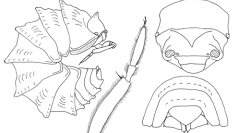

 European Journal of Taxonomy
2015 (161) - Pages 1-23 (EJT-161)
European Journal of Taxonomy
2015 (161) - Pages 1-23 (EJT-161)The study of subterranean Oniscidea in Portugal has been neglected for nearly 70 years, but recent investigations have revealed high diversity. All the terrestrial isopods from caves of mainland Portugal, including data from the literature and new material, are listed, revealing new biodiversity patterns. Twenty-seven species, belonging to 15 genera and six families, are known, of which 16 species are considered to be exclusively from subterranean ecosystems, i.e., troglobionts. Trichoniscidae is the most diverse family. Seven species in the family Trichoniscidae and one species in the family Styloniscidae are described as new (all with Reboleira & Taiti as authors): Trichoniscoides bellesi sp. nov. from the Montejunto Massif; T. sicoensis sp. nov. from the Sicó Massif; Metatrichoniscoides salirensis sp. nov. from the typhonic valley of Caldas da Rainha; Troglonethes olissipoensis sp. nov. from the Lisbon Peninsula; T. arrabidaensis sp. nov. from the Arrábida Massif; Miktoniscus longispina sp. nov. from the Sicó Massif and Cesaredas Plateau; Moserius inexpectatus sp. nov. from the Estremenho Massif; and Cordioniscus lusitanicus sp. nov. from Alentejo and Algarve, the southernmost provinces of Portugal. The subgenus Trogleluma Vandel, 1946 (Armadillidiidae) is raised to genus level. In this geographic region terrestrial isopods are the richest group of cave-adapted animals.
Isopoda, new species, troglobiont, subterranean ecosystems, Iberian Peninsula.